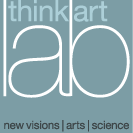NEW APPROACHES
NEW APPROACHES TO THE PROJECT OF UNDERSTANDING THE SPECIFIC RATIONALITY OF THE CHINESE WRITING SYSTEM
It is believed that with the understanding of morphograms as rules for morphic cellular automata a new approach for an understanding of the specific rationality of Chinese writing systems is achieved. With that the Blog "THE CHINESE CHALLENGE" enters into a new level of understanding Chinese rationality in a non-Western way.
(For technical reasons I publish these comments on the Blog "Rudy's Diamond Strategies" too.)
This will be elaborated in a special paper.
Here are some papers mentioned that had been on the way to this new understanding of the dynamics and pragmatics of Chinese characters.
An intermediary paper to this understanding was published as "What Chinese Grammar".
What Chinese Grammar?
Interchangeability and morphogrammatics of interpretations
To put it bluntly: Ancient Chinese characters (signs, hieroglyphs, characters) are
conceived in a transclassic setting as morphograms.
What Chinese Grammar?
Interchangeability and morphogrammatics of interpretations
To put it bluntly: Ancient Chinese characters (signs, hieroglyphs, characters) are
conceived in a transclassic setting as morphograms.
This insight is achieved with the approach of a polcontextural transformation of the categorical concept of bifunctoriality and understood as the interchangeability of locus of a character and the character itself.
Furthermore the interchangeability of Western grammatical categories to characterize Chinese characters and sentences is applied.
This is proposed with the help of a positive reading of Rolf Elberfeld studies (2003, 2007) and a negative differentiation to other approaches which are not reflecting their complicity with Western grammar.
The Amazing Power of Four
Gotthard Gunther’s space-travel algorithm and Leon Chua’s Fourth electronic Element supported by Robert Rosen’s speculations about anticipative systems
Speculations about trans-functorial and morphic metamorphosis of space - time and worlds on one side, and flux and charge of electronics on the other side, leading to the memristor and memristive systems of nanoelectronics.
Achievements and attempts to surpass classical paradigms of science by Gotthard Gunther and Leon O. Chua are portrayed and other attempts of Robert Rosen’s anticipatory systems are sketched and Martin Heidegger’s late philosophy of the Fourfold are mentioned.
Short Overview of Morphic Cellular Automata
Graphematic System of Cellular Automata
Short characterization of cellular automata by the 9 graphematic levels of inscription
As a further specification of the “overview of morphic cellular automata”, described before, a graphematic classification of the inscriptional systems shall be introduced and applied to different types of cellular automata.


0 Comments:
Post a Comment
Subscribe to Post Comments [Atom]
<< Home